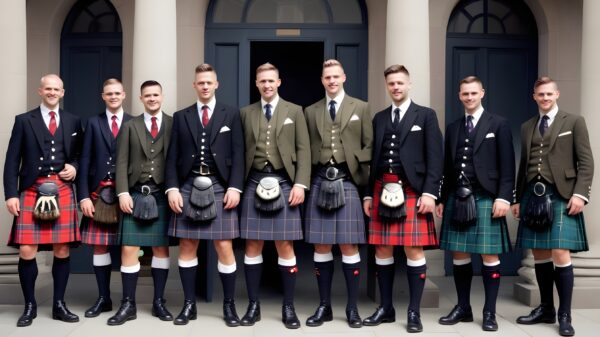Fashion brands in the mid-1800’s were only accessible through retailer catalogs, and this meant that different branches are set-up to more places, allowing a population to access the stores.
Fast-forward to 100 years later. Fashion brands started to emerge in magazines and television commercials. And in the last twenty years, fashion consumers have been introduced to technology that would change the way they would see fashion in the form of computers and internet.
Technology has changed the fashion industry massively, in fact, according to a survey carried out by comScore, 51% of shoppers are now buying items online. That means customers can search their favorite brands, designers, or online retailers and order whatever they wish in a matter of minutes.
Accessibility of the fashion industry has become easier than ever, from mobile innovations to social media and more. With the intersection of the fashion industry and the ever-growing innovations of technology, there are lots of things we can say about the future of the industry.
Fashion Marketing that Uses Virtual Reality
Virtual reality has been a thing in science fiction since the dawn of technology itself. Virtual Reality, or simply VR is a multimedia experience that puts the users in virtual environments. But now, millions of users all across the globe get to experience this technology.
On March 2014, Mark Zuckerberg, the founder of Facebook, acquired Oculus Rift, a virtual reality system. Zuckerberg aims to sell million of their VR headsets in the next decade. Some speculate this could change the way people view content, giving birth to new branches of marketing. And in the next few years, fashion will come and utilize this technology.
Big brands are already experimenting with Virtual Reality, and this helps create a new experience for fashion shoppers. Mateo Caraccia, managing director of Big Sky Studios, dubbed this as “v-commerce,” which allows customers to shop from their homes using a VR headset to “actually see the item they’re buying, and you can walk around the item, lift it up.”
Since the fashion industry moves too quickly, with trends that are instantly becoming in and out, fashion brands need to provide something new to their consumers. That’s why big brands are already using the technology, installing VR headsets in stores that immerse shoppers in virtual environments that provide insight of their products.
Daniel Grieder, chief executive officer of Tommy Hilfiger, said, “In stores, you have to bring the customer newness and not just show clothes on the rack and wait until they buy. This is something customers will talk about.”
In the future, we will see more fashion brands that use Virtual Reality as a tool for marketing. Today, while many are still in the first stages of experimenting, soon enough, technology will upgrade, and fashion will follow.
Messaging Apps as a Platform for Fashion’s Marketing
According to Michael J. Wolf, founder, and CEO of the technology firm Activate, “Messaging will blow past social networks as the dominant media activity.” And that’s already becoming more and more evident. The Economist reported that about 2.5 billion people all over the globe have at least one messaging app installed, that will reach 3.6 billion within a couple of years.
What does this mean for the fashion industry? While messaging technologies are expanding in scale, they’re partnering with third-party services to extend its reach, since a lot of their tools are free for use. Like transforming these instant messaging apps into platforms that can be made use for consuming content, playing games, and even transacting and interacting with the brands themselves.
This advancement can mean that much of what users can currently do in physical stores, on the web, or with separate apps for each brand. Buying a dress from your favorite brand can be done in messaging apps. Assisted by bots from these apps, shopping in messaging apps can complement interaction with an actual customer sales agent.
David Marcus, Facebook’s head of Messenger, said that brands which have a “strong affinity” with their clients could be more open to interactions with them on messaging apps. “The brand is basically at the same level as all of your friends and your family, people who are nearest to you that you connect with every day,” Marcus added.
Marcus also said that this kind of intimacy with the brand’s customers is incredibly powerful because it enables a more personal communication between them and customers, and leveraging their clients into anything and everything they want.
This advancement means that the number of possibilities from instant customer service exchanges to personalized content marketing is endless. “It becomes this space that will exist for your lifetime as a relationship between the client and the business, so the business always has context as to all of the previous interactions,” added Marcus.
Facebook already has a platform called Business for Messenger, which enables users to interact with their brands, meaning that the future of the fashion industry’s marketing can utilize this technology, which reaches millions of users worldwide. Although initially launched in the US, it is set to roll out to other parts of the world, as well.
Brands are finding ways to integrate their marketing tactics to platforms like these because their consumers are using these platforms, and where the customers go, the industry follows.
3D-Printed Fashion Items
From fashionable sunglasses for the summer to bag handles that last for a long time, many fashion accessories and other parts are made using traditional industrial molds. These hollow blocks adopt the shape of the mold and harden, filled with liquefied versions of materials like plastic, glass, and metal.
Once finished, these shapes can be manufactured over and over again, creating thousands of identical products. But because these traditional molds cost thousands of dollars to make, customizing fashion items from traditional patterns like these are not an easy ordeal.
Enter 3D-Printing, where manufacturers use computer-controlled printers that can ‘print’ objects layer by layers, from the ground up, based on designs created digitally. And because there is no investment in creating traditional molds, using 3D-printing to build customizable items can become the future of the fashion industry.
Sportswear brand giants have been experimenting different 3D-printed designs to create customized consumer products they can sell. Some have already put out designs for 3D-printed football boots, made customizable for an individual’s feet, while some unveiled their 3D-printed models.
Recent innovations in the finished products of 3D-printed fashion items also include an option to create pieces with smooth and polished surfaces that are more luxurious-looking. But there is no doubt that 3D-printing can get costly.
“While 3D printing is currently quite widespread when it comes to creating prototypes, it’s hardly as popular in the area of consumer products because, in order to achieve high quality, the manufacturing costs can get quite expensive.” Christian Hartung said, CEO of VOJD Studios, a company that specializes in 3D-printed jewelry.
“Fuelled by the expiration of patents on key techniques and lower prices for raw materials, the cost of 3D printing consumer products is falling significantly, and will result in a 50 percent drop in the cost of the average 3D-printed object between 2013 and 2018,” Hartung added.
Indeed, fashion has yet to embrace and adapt 3D-printed items entirely, but no doubt it is coming close. With the power of customizing fashion items for an individual’s taste and standard, the fashion industry is one step closer to utilizing 3D-printers for the products they offer.
Other Things to Look Out for
The universe of fashion and technology intersecting provides us an exciting future. From gadgets that tell us what to wear to virtual assistants styling you, here are other things to look out for in the future of fashion.
Digital Assistants
In the future, through the development of Artificial Intelligence, digital assistants will emerge and can help you sort out your clothes. Having a personal digital stylist like this monitors you and can suggest what you should wear based on the weather, occasions and recommend clothes from your favorite stores.
Since Artificial Intelligence is progressing, it’s only a matter of time before digital assistants are massively adopted.
Wearable Technology
According to Wareable, “The new age of wearables tap into the connected self – they’re laden with smart sensors and make use of a web connection, usually using Bluetooth to connect wirelessly to your smartphone. They use these sensors to connect to you as a person, and they help you to achieve goals such as staying fit, active, losing weight or being more organized.”
Big tech companies have already rolled out series of watches that function as smart devices. These devices measure your body temperature, can track your location, and can make smart decisions on the data given. We can expect that other tech brands will follow suit and will release fashion accessories that look dashing and can calculate information at the same time.
Machine Learning as Part of Fashion Technology
Using Artificial Intelligence, companies who use apps or social media can use simple statistical analysis of the data you entered before and personalize your recommendations. Simply put, in the future, companies will be able to customize feeds to an individual level and remove unnecessary stuff that might distract customers in their online shopping experience.
Other things are coming to improve the current technology we have today, and the future of fashion will surely adapt to the platform that’s available to them.
Takeaway
Technology has made significant impacts all around the world, and it doesn’t stop there. Fashion trends may come and go, but the intersection of the fashion industry and technology won’t be going away. Technology has made a profound impact on the way in the making, marketing, selling, and purchasing of fashion items.
Today, the tech present is as important as sophisticated designs, and high-class quality makes or breaks something or someone in the fashion industry. And in the future, we can expect that the fashion industry intensifies this cause.
The truly successful fashion brands in the future will be those that can not only realize technology’s fast-paced development and improvement but will also cope up with it and embrace it.
Leslie Wyman is a fashion designer who does blog writing as a hobby. She is also a tech savvy and likes to read articles about the latest technological updates. Leslie keeps herself knowledgeable about the current trends and her free time routine includes scrolling through French Connection, an online fashion destination.

1 Comment
Leave a Reply
Cancel reply
Leave a Reply
This site uses Akismet to reduce spam. Learn how your comment data is processed.

























































































































































































Aman chaurasia
August 18, 2017 at 10:06 am
Hey Leslie, Thanks for sharing this fabulous article. Definitely, technology has changed the world at a pace like never before and the involvement of technology like VR, 3d printing, and Artificial Intelligence lashed chatbots in the fashion industry will take it to the newer peaks. If we talk about the online fashion industry, peoples are more concerned about the personalized experience and to build the best recommendations ML plays a crucial role.